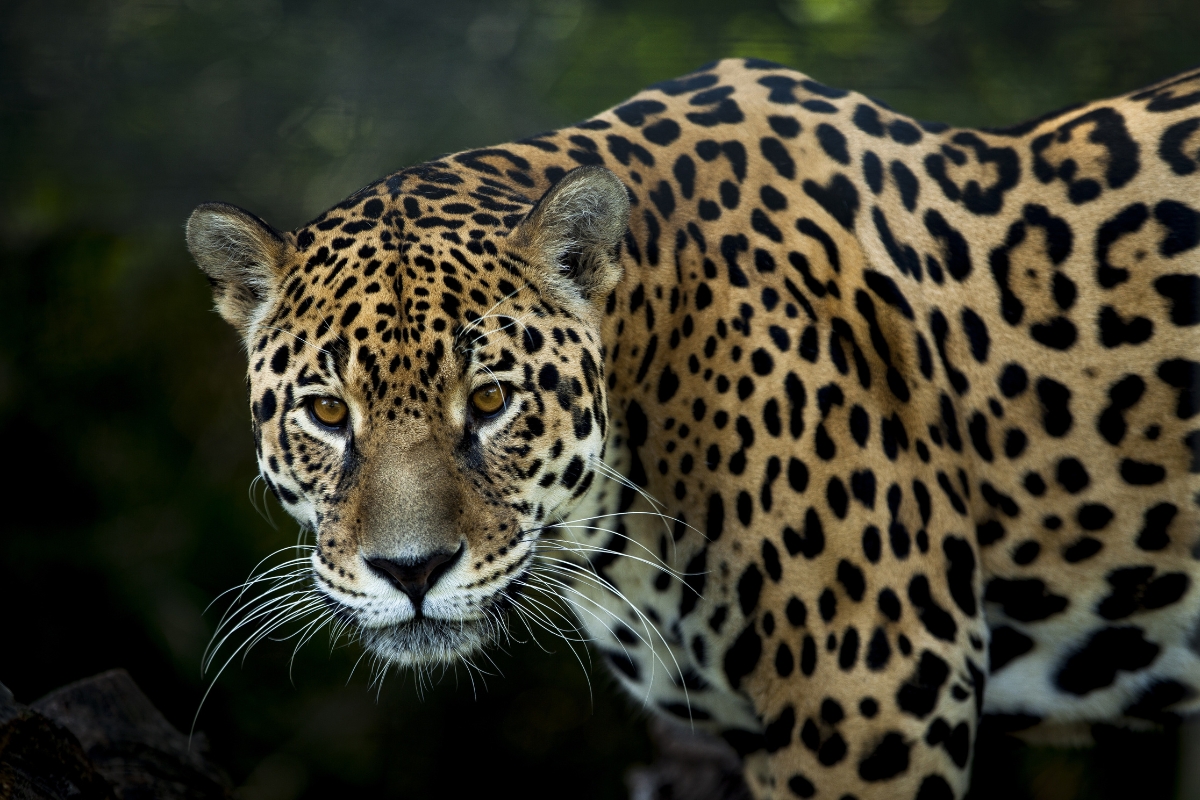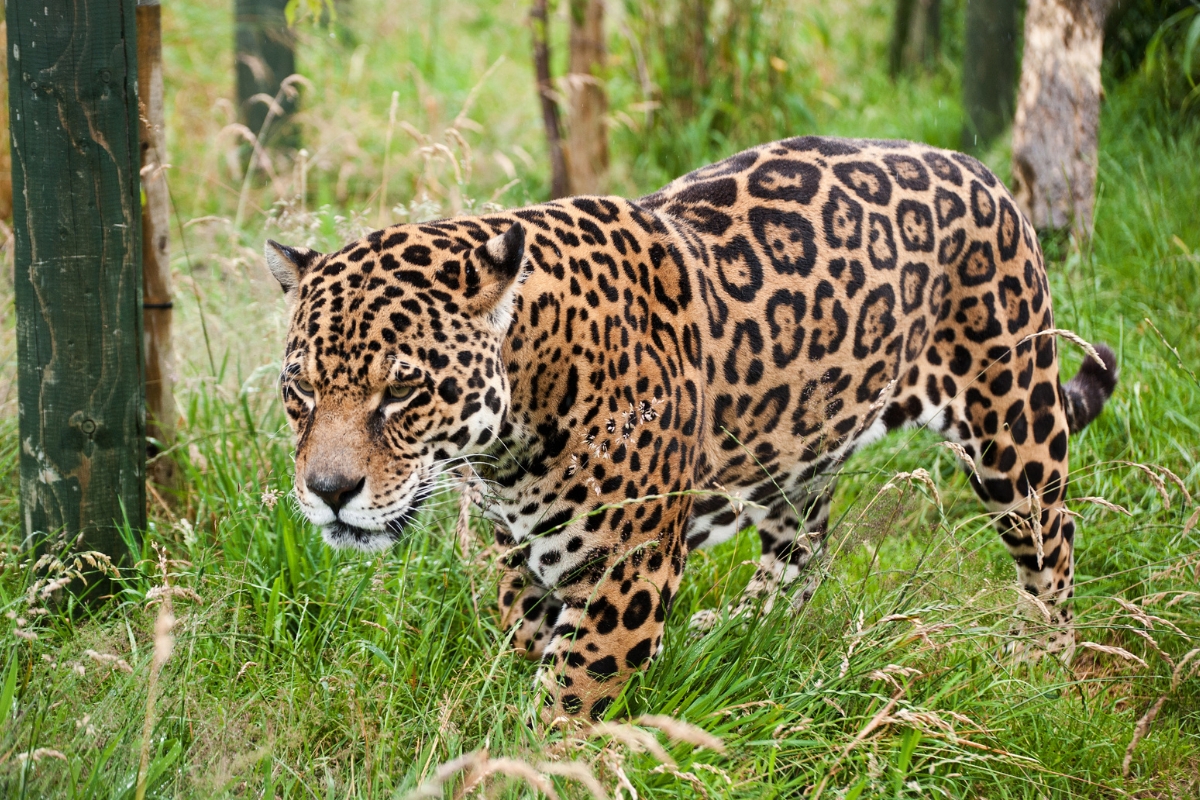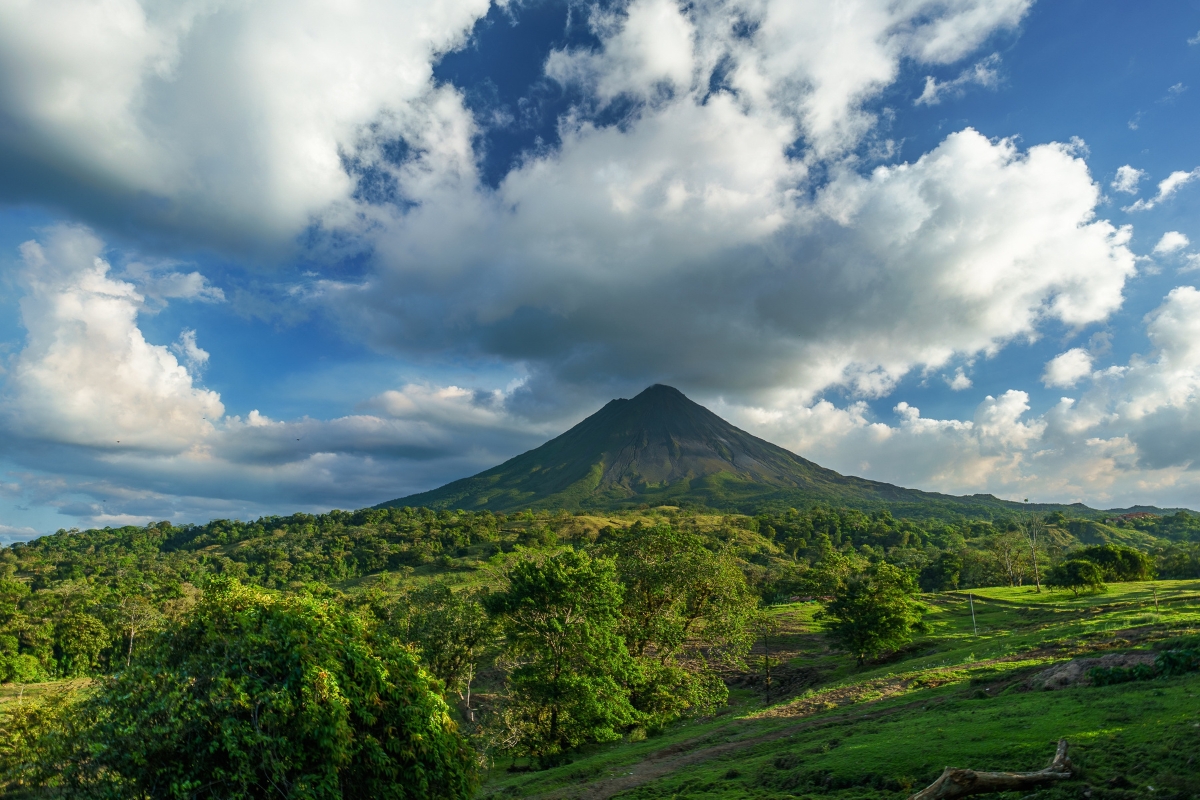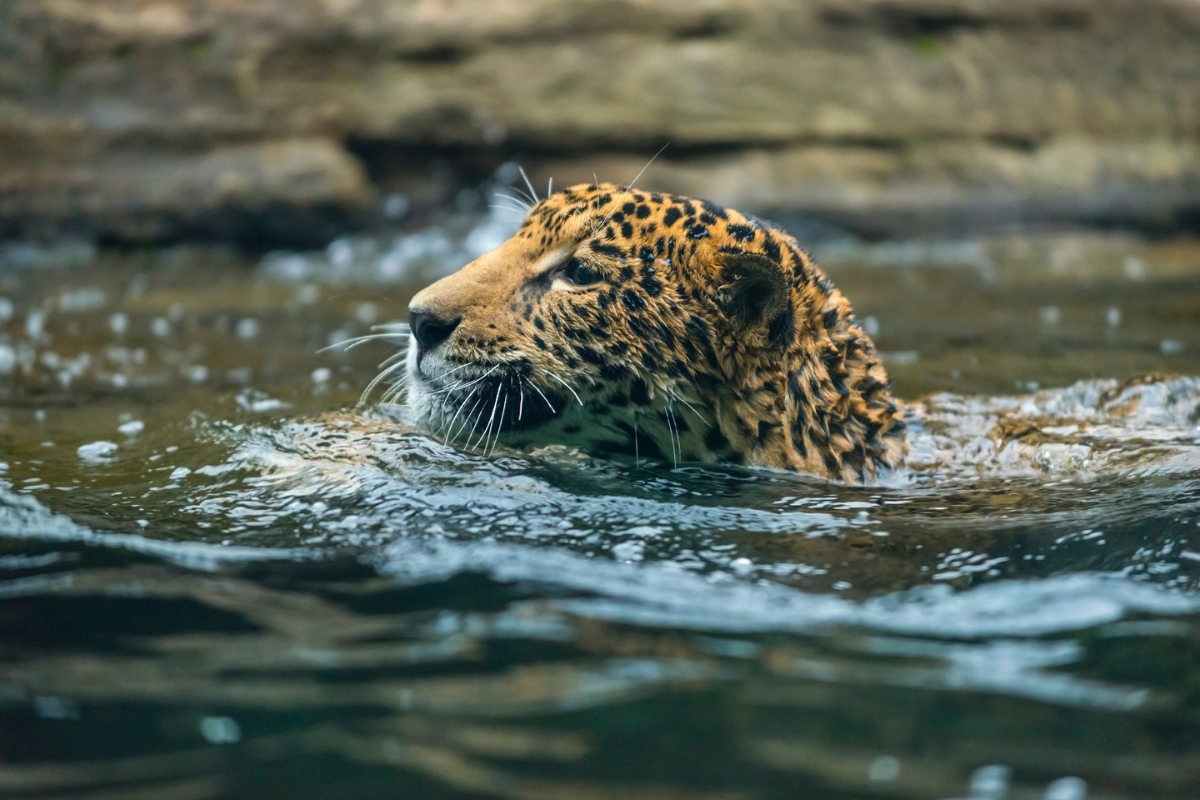


Innovative conservation measures encompassing everything from community involvement to cloud computing are allowing this flagship species to not just survive, but thrive.
In the dense rainforest of Costa Rica’s Tortuguero National Park, guests on a guided hike stumble across an intimate scene. Perched on a branch next to the Colorado River, a mother jaguar preens her young cub. For what seems like hours – but are probably only minutes – they marvel in silence at the sinuous beauty of these apex predators. Then, with a single flick of her whisker, the mother signals that it’s time to go, and the black-and-gold duo disappears into the thick undergrowth. It’s almost as if the entire encounter didn’t even happen – but the camera footage confirms it did.
It goes without saying that you have to be extremely lucky to spot jaguars in Tortuguero National Park. But a handful of our travelers have seen them – and sightings appear to be on the rise. The data bears this out: in the nearby Guanacaste Conservation Area, sightings jumped from zero between 2005 and 2009 to 20 sightings in 2021 alone.
Comeback kings
Section Type: standardWidthImageS
Costa Rica’s jaguars are making a powerful comeback in the wild.

Weighing up to 250 pounds, jaguars are the largest cats in the Western Hemisphere and the third largest in the world (behind tigers and lions). These majestic predators once roamed a huge swath of the Americas, from the southern United States all the way down to Buenos Aires in Argentina. Due to habitat loss and other factors, their range has been reduced by around 50% and – equally importantly – their habitat has become fragmented. In recent years, however, several pockets of hope have emerged: data from Costa Rica, Argentina, Brazil, and Mexico suggest that, in some places, jaguars are making a dramatic comeback.
The cats’ recovery is no accident – it’s the result of sustained efforts from conservationists, communities, NGOs, and governments across the region. It all starts with proclaiming – and enforcing – protected areas. In recent decades, conservationists have realized that connecting these parks and reserves via “wildlife corridors” is equally important. While corridors are a godsend for all animals, they’re especially important for a species like the jaguar, which needs “at least 100 square miles of roaming space to thrive.” The final piece of the puzzle is community engagement: marking reserves on maps and agreeing on protection strategies in boardrooms means nothing if the true custodians of the ecosystem aren’t involved.
Costa Rican case study
Section Type: standardWidthImageS
Costa Rica’s forests, once nearly lost, now thrive thanks to bold policy, local stewardship, and the power of eco-tourism.

Costa Rica provides a perfect example of these forces at work. In 1940, three-quarters of the country was covered by forest. By 1961, this figure had dropped to 53% – and in 1987, just 21% of Costa Rica still had forest cover. At that point, the fate of the jaguar – and of Costa Rica’s biodiversity in general – seemed sealed.
But then something incredible happened. As Carol Konyn writes, “Thanks to a government-led initiative that pays local communities to help protect the natural ecosystem, Costa Rica became the first tropical country to have stopped, and subsequently reversed, deforestation.”
As Konyn adds, “In 1996, the Costa Rican government made it illegal to chop down forest without approval from authorities, and the following year it introduced the Payments for Environmental Services (PES) Program. Today, close to 60% of the land is once again forested, and the landscape is home to around half a million plant and animal species.”
Put bluntly, money talks. The Costa Rican government realized that tourism was more valuable to its economy than agriculture, and they got out their checkbooks. As Carlos Manuel Rodríguez, Costa Rica’s minister for environment and energy, said, “We have learned that the pocket is the quickest way to get to the heart.” This may sound mercenary, but the numbers speak for themselves. By incentivizing local communities to preserve their environments, everybody has won – communities, government, tourists, and planet earth herself.
In 2024, tourism produced $5 billion in revenue for the country, with the industry accounting for more than 8% of gross domestic product and employing 200,000 people.
Communities and corridors
Section Type: standardWidthImageS
Discover the living corridors of Costa Rica’s forests, where jaguars roam and conservation meets culture.

Recovering lost forest is the cornerstone of jaguar conservation, but it is not the only ingredient. Local communities often have negative perceptions of these apex predators. This is entirely understandable: jaguars can and do prey on livestock, especially if habitat loss (and the reduction in prey that goes with it) forces the cats to encroach on farmland. The solution is twofold:
Conserving forests means jaguars are less likely to stray into agricultural areas.
Employing community members in conservation or tourism puts a monetary value on keeping jaguars (and other species) alive.
While total forest cover is an extremely important indicator of ecosystem health, it’s also important for population transfer that forest patches are connected. As the WWF explains: “Protected areas in isolation aren’t enough. When protected areas are connected, they help maintain the natural processes that support clean air, rich soil, and freshwater on which we all rely. Habitats that allow for this unobstructed movement have what we call ‘high connectivity,’ meaning that all living things can freely move and access the resources they need to thrive. If connectivity is lost, landscapes, river systems, and seascapes become fragmented, the movement of wildlife becomes limited or ceases, and ecological systems can begin to break down.” This is where conservation corridors come in – and, with no fewer than 44 biological corridors, Costa Rica is a real pioneer in the field. Quite something for a country the size of West Virginia!
Camera traps and cloud computing
Section Type: standardWidthImageS
Cutting-edge tech is helping researchers track and protect Costa Rica’s elusive apex predator in real time.

It’s impossible to effectively conserve jaguars if you don’t know how many animals you have. And with such an elusive species, camera traps are by far the best way to figure this out. In Costa Rica, this task has been taken on by the non-profit organization Osa Conservation (named after the Osa Peninsula), which operates a network of camera traps throughout Central America.
While camera traps may seem like cutting-edge technology to most, Osa Conservation takes this several steps further. Their camera traps don’t just use AI to identify species (and individual animals!); they also send the data to researchers in real time. As technology manager Eleanor Flat explains, “If a camera trap detects threatened species close to a poaching hotspot, we can send rangers to prevent hunting before it happens.”
In addition to smart camera traps, Osa Conservation is pioneering the use of other technologies, including thermal drone imaging, acoustic monitoring, and remote underwater videos to conserve jaguars, peccaries, sea turtles, and many other species.
Beyond Costa Rica
Section Type: standardWidthImageS
From Mexico to Argentina, jaguars are returning to the wild.

While Costa Rica provides an excellent blueprint for jaguar conservation, it is by no means the only success story:
In Brazil’s Pantanal wetlands, jaguar ecotourism has turned big cats into valuable assets for local communities, reducing conflict and encouraging habitat preservation while boosting population stability.
The Northern Jaguar Reserve in Sonora, Mexico, provides a safe haven for jaguars at the northern edge of their range, where conservationists and ranchers collaborate to protect habitat and reduce poaching.
In Argentina’s Iberá National Park, jaguars were reintroduced after decades of local extinction. The rewilding project, led by Fundación Rewilding Argentina, has seen cubs born in the wild and thriving.
The world’s first jaguar reserve, Cockscomb Basin Reserve in Belize, offers critical protection and research opportunities that have helped safeguard jaguar populations in Central America since the 1990s.
Jaguars are making a cautious return to the Atlantic Forest around the Iguazu Falls on the border of Argentina and Brazil. Binational conservation efforts, strict anti-poaching measures, and habitat corridors have enabled a small but growing jaguar population to reestablish itself in one of South America’s most iconic natural regions.
Be a part of the solution
As a proud B Corp, we at SA Expeditions are passionate about the power of travel to make the world a better place. Ecotourism is a prime example of this philosophy at work. By traveling to (hopefully) see jaguars in the wild, you are directly contributing to their conservation by providing employment to local communities and funding the efforts of NGOs like Osa Conservation, Panthera, and many others.
Section Type: cta
If seeing a jaguar in the wild is your main priority, Brazil’s Pantanal region is by far your best bet. For a wide ranging case study of the benefits of a holistic approach to conservation, Costa Rica is the undisputed poster child. We also arrange eco-sensitive tours to other jaguar hotspots including Belize, the Ibera Wetlands, and the Iguazu Falls.


Company
Partners
Copyright © 2025 SA Luxury Expeditions LLC, All rights reserved | 95 Third Street, 2nd floor, San Francisco, CA, 94103 | 415-549-8049
California Registered Seller of Travel - CST 2115890-50. Registration as a seller of travel does not constitute approval by the state of California.










